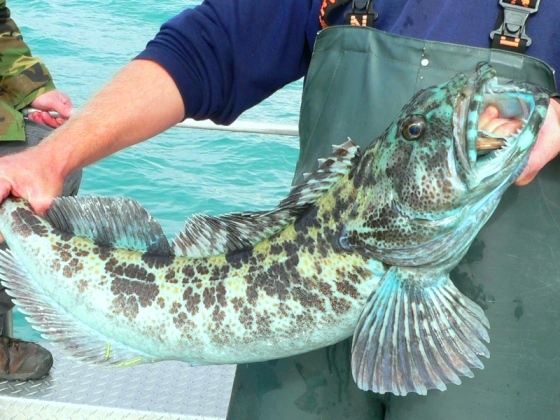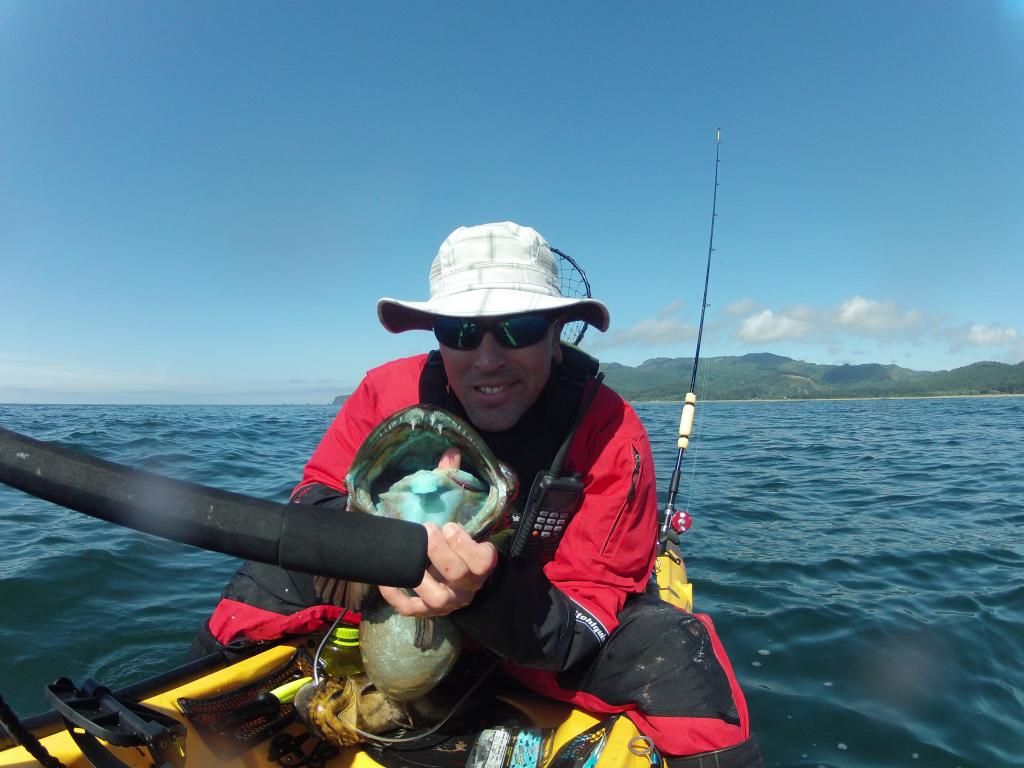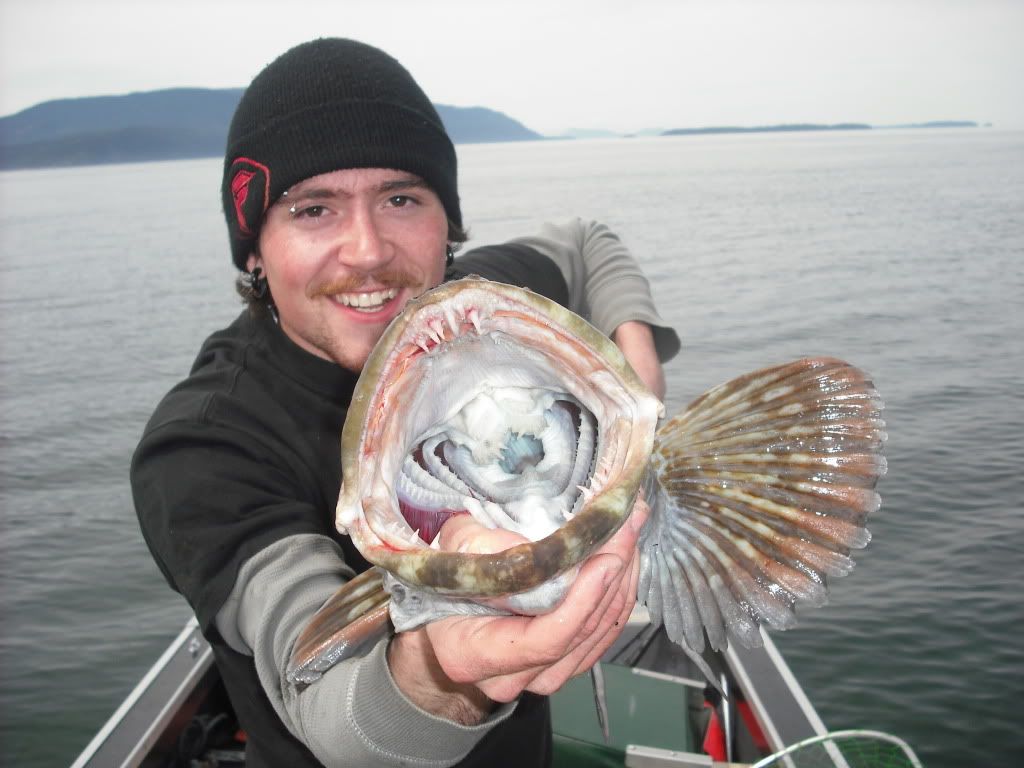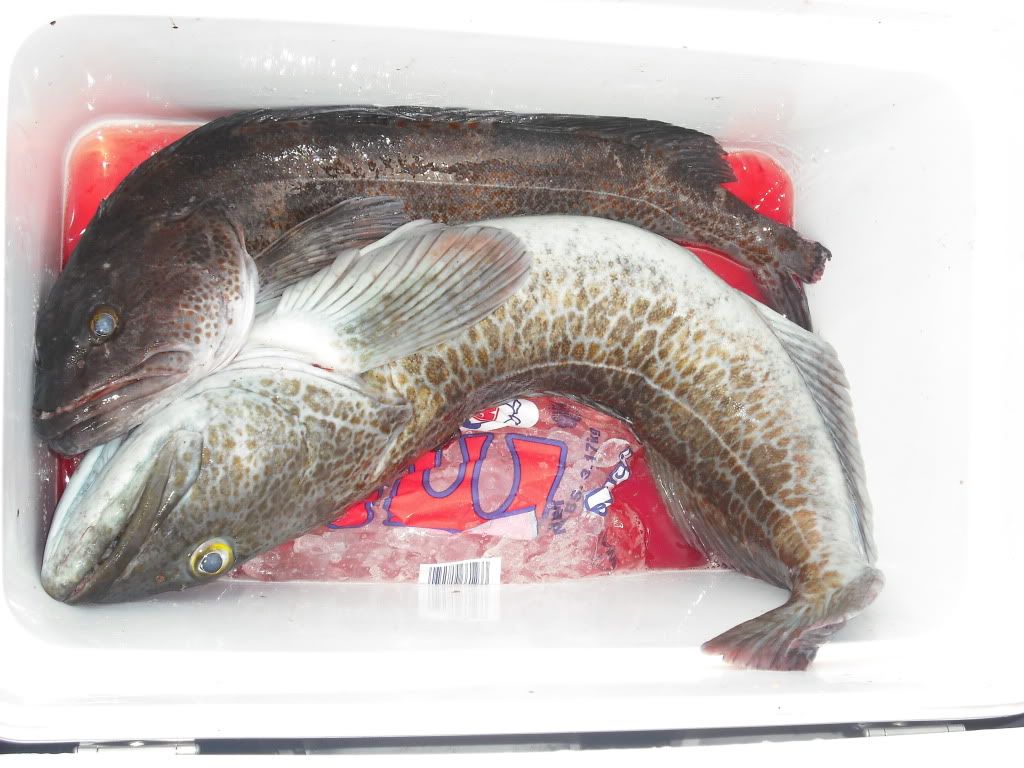Post and find fish ID pictures/descriptions here!
Forum rules
Forum Post Guidelines: This Forum is rated “Family Friendly”. Civil discussions are encouraged and welcomed. Name calling, negative, harassing, or threatening comments will be removed and may result in suspension or IP Ban without notice. Please refer to the Terms of Service and Forum Guidelines post for more information. Thank you
-
Matt
- Admiral
- Posts: 2186
- Joined: Sat Apr 28, 2007 1:56 pm
- Location: WaRshington
Post
by Matt » Mon Aug 30, 2010 11:23 pm
Last edited by
Matt on Fri May 13, 2011 5:44 am, edited 1 time in total.
"When I grow up I want to be,
One of the harvesters of the sea.
I think before my days are done,
I want to be a fisherman."
-
rojomojo
- Petty Officer
- Posts: 12
- Joined: Fri Jul 19, 2013 3:22 pm
Post
by rojomojo » Sun Jan 04, 2015 10:49 pm
I was at NB and saw a guy cleaning one that was almost pure blue from its belly to it's meat inside. How is that? Diet would be my guess but scientific explanation would be awesome.
-
fishnislife
- Admiral
- Posts: 2630
- Joined: Fri May 11, 2007 8:33 am
- Location: Kitsap County
-
Contact:
Post
by fishnislife » Mon Jan 05, 2015 5:33 am
Honestly, I would think there diet too. Maybe they consume more squid than others and the ink while digesting gets into their meat.
Never was lucky enough to catch one myself, but I have seen them and they are a trip. Kind of like catching something albino.
You know maybe it's just a genetic anomaly like an albino fish or animal. Makes me wonder how common they are.

-
jd39
- Commander
- Posts: 508
- Joined: Wed Jun 20, 2012 7:48 pm
Post
by jd39 » Mon Jan 05, 2015 6:00 am
Very tasty fish! God I want a salt boat! Have seen that blue/green tint on greenlings and cabazon too.
-
Mike Carey
- Owner/Editor

- Posts: 7765
- Joined: Sun Apr 01, 2007 10:56 am
- Location: Redmond, WA
-
Contact:
Post
by Mike Carey » Tue Jan 06, 2015 6:47 am
pretty sure it's the diet. I caught a cabezon years ago at Neah Bay that had the same coloring. Beautiful colors.
 "Takers get the honey, Givers sing the blues".
"Takers get the honey, Givers sing the blues".
-
Polyangler
- Petty Officer
- Posts: 10
- Joined: Wed Oct 01, 2014 2:54 pm
- Location: Lacey
-
Contact:
Post
by Polyangler » Sun Jan 18, 2015 6:09 pm
Ling, cabs, and the occasional greenling will take on that blue color. Same as some chinook will have white flesh. It has nothing to do with their diet. It's the way that individual processes the food it eats. The blue is actually a bile in the blood. Some people claim that blue bottom fish, and white king taste better than others. I personally don't notice a difference, but it always makes me laugh when my dinner guest think I'm cooking some weird muppet fish. I wish it kept the blue hue when cooked, but they turn just as white as the standard models.

 http://heroesonthewater.org/ Heroes on the Water
http://heroesonthewater.org/ Heroes on the Water
Serves our Nation’s warriors by providing healing and rehabilitating kayak fishing outings that are physically and mentally therapeutic through our nationwide community of volunteers and donors.
-
leefromseattle
- Angler
- Posts: 3
- Joined: Wed Feb 18, 2015 8:35 pm
Post
by leefromseattle » Fri Feb 20, 2015 11:30 pm
They're one of the tastiest and dumbest fish there are.
You don't even have to get a hook in them and unless you pull their head out of the water or jerk it away from them, they won't let go. They just clamp down on the bait fish and ride all the way into the net.
You can catch lings just about anywhere from shore that there are rocks. I used to go to deception pass under the bridge before I got a kayak.
A little bladed spinner (for trout) along kelp paddies or along rocks with lots of seaweed will catch greenlings or similar for bait. (from shore too, no excuses...)
-
hawkoath
- Petty Officer
- Posts: 37
- Joined: Fri Sep 19, 2014 5:38 pm
Post
by hawkoath » Sat Feb 21, 2015 6:04 pm
If you are looking for a fish that would turn blue when cooked you can use the old Treut au la Bleu formula of keeping a trout alive and then bonking it and gutting it. Throw it in some white vinegar immediately and the skin will turn blue and stay that way.
-
mlgetbent
- Angler
- Posts: 2
- Joined: Sun Mar 24, 2013 11:04 pm
Post
by mlgetbent » Tue Jun 27, 2017 10:31 am
I thought I would share one of my favorite ling pics from a couple years back... Lil turd still brags that its the biggest landed on my boat...Had to remind him of the 25 pounder I caught on my buddies
![ThumbsUp [thumbsup]](./images/smilies/msp_thumbsup.gif)
[
-
Attachments
-

- Add description















